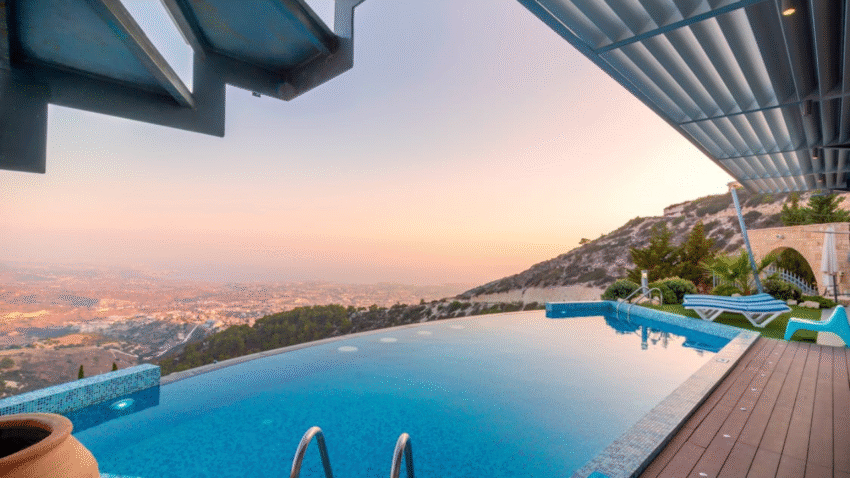Introduction
Struggling with a green, swampy-looking pool that’s taken the fun out of swimming? In this complete step-by-step guide on how to clean a green swimming pool, you’ll learn exactly what causes that green tint and how to restore your pool to crystal-clear perfection. Whether it’s due to algae blooms, poor filtration, or chemical imbalance, we’ve got you covered with easy, effective methods.
Why Cleaning a Green Pool Matters
Cleaning a green swimming pool isn’t just about aesthetics—it’s critical for swimmer safety and long-term pool health. A green pool is often caused by algae growth, which thrives in warm, unbalanced water with poor circulation. Left untreated, algae can damage your pool surface, clog filters, and harbor bacteria. Regular maintenance, proper pH balance, and clean filter systems are key to avoiding costly repairs and keeping water clarity high all season long.
Step-by-Step Guide to Cleaning a Green Swimming Pool
Step 1: Test and Balance the Pool Water
Start by using a pool test kit to check your chlorine, pH, and alkalinity levels. A green pool typically shows low or zero chlorine levels and high pH. Adjust as needed to get:
- pH: 7.2–7.6
- Alkalinity: 80–120 ppm
- Chlorine: At least 3 ppm for shock treatment
Pool Owner Tip: Lowering the pH before shocking makes chlorine more effective at killing algae.
Step 2: Remove Debris
Use a leaf net or skimmer to remove as much surface debris as possible. Organic matter like leaves and twigs worsen algae growth and can clog filters during the cleaning process.
Step 3: Brush Pool Walls and Floor
Use a stiff pool brush to scrub algae off the walls, floor, steps, and behind ladders. This loosens the algae so the shock can work more effectively.
Step 4: Shock the Pool
Shock your pool with a high dose of chlorine—use 2 to 3 pounds per 10,000 gallons of water. Broadcast it evenly across the pool. If the water is dark green, double or triple shock may be required.
Caution: Always add shock at dusk or night. Sunlight reduces chlorine effectiveness.
Step 5: Run the Filter System Continuously
Run your pool pump and filter for 24–48 hours straight to circulate the water and remove dead algae. Monitor filter pressure—backwash a sand or DE filter when pressure increases 8–10 psi above normal.
Step 6: Use a Pool Clarifier or Flocculant (Optional)
A clarifier binds tiny particles for easier filtration, while a flocculant sinks them to the bottom for vacuuming. This step helps speed up the clearing process if your pool remains cloudy.
Step 7: Vacuum the Pool
Once the dead algae settles, vacuum the pool manually to waste (not through the filter) to remove sludge and prevent re-contamination.
Step 8: Retest and Adjust Water Chemistry
After clearing the pool, retest your water. Make any final adjustments to chlorine, pH, and alkalinity to maintain balance and prevent future algae blooms.
Common Mistakes to Avoid
- Skipping the pH Adjustment: Shocking without balancing pH reduces chlorine’s effectiveness.
- Not Brushing the Pool First: Algae clings to surfaces—shocking alone won’t eliminate it.
- Failing to Clean the Filter: A dirty filter can’t circulate water properly or trap dead algae.
- Using the Wrong Type of Shock: Always use chlorine-based shock unless you have a saltwater or specialty pool.
- Inconsistent Maintenance: Once clean, a lack of routine care will invite algae back.
Extra Tips & Pool Hacks
- Algaecide Follow-Up: After shocking, use a quality algaecide weekly to prevent regrowth.
- Pool Cover Use: A solar cover keeps debris out and reduces algae by blocking sunlight.
- Regular Brushing: Brushing your pool weekly helps prevent algae from taking hold.
- Seasonal Cleaning: Before pool opening or after a storm, give your pool an extra cleaning boost.
Check out our guide on [how to shock your pool properly] for even more tips!
Conclusion
Cleaning a green swimming pool might feel overwhelming, but with the right approach, you can bring your water back to clear and swimmable in just a few days. Stay consistent with your maintenance routine, monitor your chemical levels, and your pool will stay healthy and inviting all season long.
✅ Bookmark this guide for your next pool emergency!
